Description of sodalite, its properties and subtleties of application

Of all the minerals in existence, many people consider diamonds and emeralds to be the best choice. Pyrope, jasper, carnelian, aventurine and many other stones are also well known and popular. Our article is devoted to a mineral of amazing properties and beauty - sodalite.

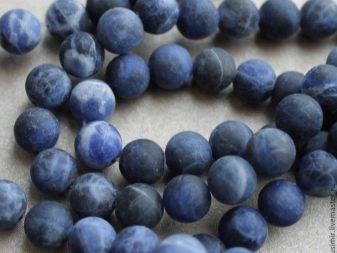
What it is?
Usually in everyday life sodalite is called "rock salt" or "baking soda". The main constituent of the mineral is sodium (hence the name). The breed looks like lapis lazuli in appearance, which is often the reason for unintentional confusion. Often this moment is also used for purposeful deception. In terms of chemical composition, the mineral belongs to sodium aluminosilicates, that is, along with the main substance, it also contains a certain amount of aluminum and silicon.
All of these metals do not exist in their pure form. They chemically bind with oxygen in the composition of the mineral. The ratio of the components is as follows:
- sodium oxide - about 26%;
- silicon oxide - 37%;
- aluminum oxide - 31%;
- chlorine - about 7%.
It should be borne in mind that, unlike lapis lazuli, sodalite cannot contain sulfur impurities. But such a difference can be detected only in laboratory conditions. Outwardly, it practically does not manifest itself in any way. The similarity of minerals is also expressed in the presence of whitish spots. To exclude an error, you have to conduct a scrupulous examination.

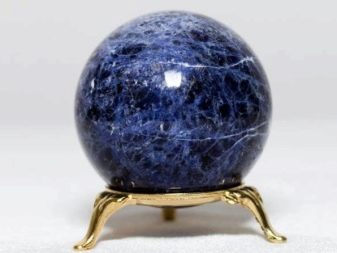
Place of Birth
Mostly sodalite appears as a result of volcanic activity. It is often found in the mountainous regions of Portugal, Germany or Canada. There are also a number of Russian sources located on the Kola Peninsula.
It is necessary to search for sodalite in alkaline rocks.
As a result of the research, it was found that the mineral is not created at great depths, but after the ejection of magma outward. Most often, sodalite is surrounded by pegmatite.
The mineral belongs to the number of veins, or, in other words, fills in the cracking of the earth's crust. The rock is mined mainly in secondary sediments. The accessory type of sodalite is also present on the territory of Karelia (or rather, in its northern part). The main Russian massifs are Salmogorsky, Lesnaya Baraka, Afrikanda, Gornoozersky. There sodalite is surrounded by:
- nepheline pyroxenites;
- urtites;
- malignites;
- alkaline pegmatites.


Sodalite was found in the Ilmen mountains, where it is surrounded by apatites, cancrinites, calcites, and pegmatoid miaskites. In the Cherry Mountains in the Urals, the mineral is a component of pegmatites with weak differentiation. Its formation was also revealed in the Synnyr massif located to the north of Lake Baikal. Secondary mineral deposits found in:
- Yakut massif Tomtor;
- Transangare;
- Burpala massif (west of Lake Baikal);
- Murunsky massif (east of this lake);
- Botogol massif (eastern part of the Sayan Mountains);
- Kuznetsk Alatau (among the nephelines);
- Tove;
- Mariupol array;
- complexes Pambak, Tezhsar, Shvanidzor (Armenia);
- Esil massif (Kazakhstan);
- a number of alkaline massifs in Tajikistan and Kyrgyzstan.
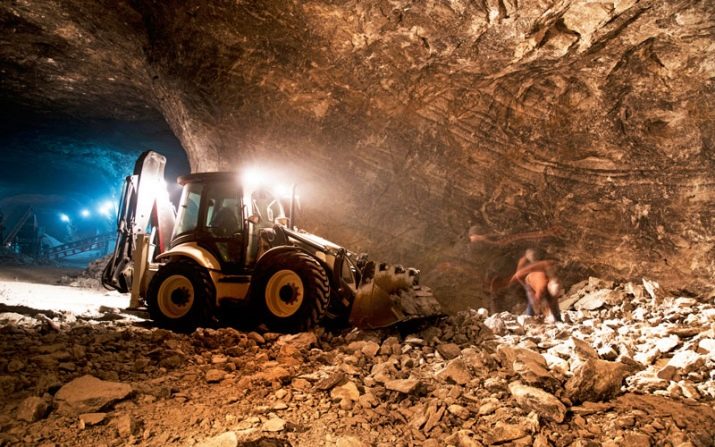
It is known about the presence of sodalite in the Greenland massifs of Ilimausak and Kangerlussuaq, in Czechoslovakia, Poland, central Italy, Romania and southern Portugal. There are deposits of the mineral on the African continent - in the Chilva, Chikola, Dzhunguni massifs. There, sodalite can be both a rock-forming and an accessory component. It is sometimes noticed that it grows inside the feldspar. On the North American mainland, sodalite is found in the states of New Hampshire, New Jersey, Maine, Montana, Arkansas, the provinces of Quebec, Ontario, and British Columbia.
Another mineral is mined or present in:
- Republic of Korea;
- India;
- Myanmar;
- Great Britain;
- France;
- Germany;
- nepheline melanophonoliths of Trinidad;
- ultra-alkaline phonoliths of the Marquesas Islands;
- New South Wales;
- meteorites Allende, Lance.


Properties
Chemical and physical
Unlike lapis lazuli, a mineral such as sodalite can have more varied colors. Samples of gray, white, green and even red colors are known. The latter type was discovered in 1903 by researcher Hackman.
For a long time, searches for it did not give any result, because the stone turns black upon direct contact with air.
Only a special technique helps to return it to its original color.
Whitish spots characteristic of sodalite during chemical analysis turned out to be inclusions of calcite. At the same time, they cannot give sun glare, like similar spots on lapis lazuli. The reason is the absence of an additional impurity of pyrite. The hardness of both stones is approximately the same. Their density also coincides (depending on the exact composition, there is from 0.0022 to 0.0024 kg per 1 cubic cm of rock).
Both minerals shine like glass. But sodalite shines more intensely and does not give the characteristic oily sheen. The mineral has many pores. Thanks to them, he abundantly absorbs foreign substances. This allows, for example, to change color when exposed to sodium vapor.
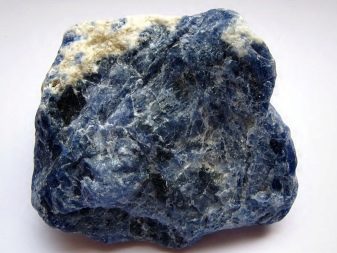

The name was given to the mineral in 1810. There is no evidence that he was known in the Middle Ages or earlier. The rarity of sodalite is associated with the peculiarities of its extraction from the surrounding rocks. The breed is characterized by cubic syngony and implicit cleavage. The fracture may simply be uneven or speckled with shells.
Sodalite can enter into ion-exchange reactions. It is sometimes processed with a file. Known stones:
- blue;
- blue (including with white veins and dots);
- green;
- gray-blue;
- yellow color.
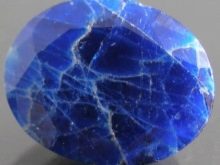
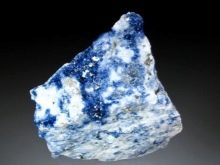

Magical
People who are fond of extrasensory perception and magic consider sodalite to have a number of supernatural properties.Indian belief says that the mineral helps to strengthen intuition and accelerate enlightenment. The stone is often used as adornment by yogis. Based on the statements of astrologers, sodalite is of the greatest importance for those born on the 12th lunar day. Astrologers also believe that the mineral is suitable for the elements of Scorpio, Sagittarius and Taurus.
Supernatural lovers often use sodalite for meditation. Quite often, it finds application in the rituals of love magic (as an intensifier of interest in carriers).
Men are also recommended to wear it, but this time in order to increase the clarity of thinking and make the right decisions in a difficult situation.
The blue mineral promotes the development of intuition, and yellow is considered an aid in the search for inner harmony. Psychics believe that red stones help restore vitality.



Healing
According to the opinion of healers, sodalite helps the victims of radiation exposure. It is often advised also for those who have low or high blood pressure. Some lithotherapists say that the stone has a positive effect on the condition of the liver. According to some adherents of traditional medicine, the mineral helps to cope with ailments of the liver and heart, kidneys and even digestion. There is also an opinion that the stone will help with insomnia, Graves' disease, and weakening of bone tissue.


Use in jewelry
In the vast majority of cases, the stone is used for cabochon jewelry. Faceted cut only applies to transparent sodalites... The opaque mineral is processed so that the texture and characteristic pattern are not lost. Therefore, it is imperative that sections are excluded and only polishing is carried out. It aims to form rounded ornaments.
Sodalite is used not only in Europe but also in Asia. There, jewelry of a predominantly religious nature is produced from it. An average of 3,000 rubles is paid for a rosary about 0.3 m long. Beads suspended on threads are a kind of blank for needlewomen. 0.4 m of such a cord cost from 2 to 2.5 thousand rubles.
When buying untreated fragments of sodalite 0.03-0.04 m long, they pay from 300 to 500 rubles. The largest specimens (which are three times more) after polishing sometimes cost from 3 to 4 thousand. For decorative purposes, square and triangular inserts are made from sodalite. In this case, be sure to make sure that there are large smooth areas. The mineral is valued by jewelers due to its medium hardness; even the world's leading experts work with it.

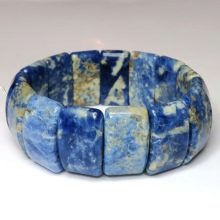
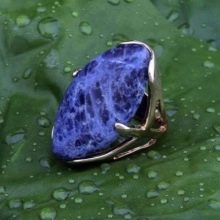
In our country, sodalite is still used much less than in Europe, foreign Asia or the United States. But even very popular celebrities appreciate him there. So the stone has a great future.
For your information: in ancient times, sodalite was first used to decorate Inca buildings. A blue mineral paint was prepared from the residues. In addition to the jewelry industry and decorative finishing of buildings, sodalite is also used in optical devices.
Who is it suitable for?
The description of the purported medicinal properties and magical prejudices surrounding sodalite reveals which people commonly use it. But astrologers would not be astrologers if they did not try to complicate matters as much as possible and promote their additional services. They argue that when choosing a mineral, it is necessary to take into account not only the sign of the zodiac, but also many other factors. More accurate information supposedly can be provided by the layout of special cards. Whether to trust such instructions or not - everyone decides for themselves.


Care and storage
Sodalite is compatible with:
- corals of various colors;
- crystal;
- malachite;
- amethyst;
- rose quartz (and no other stones).
In any case, jewelry should be stored on a soft support. When these things are not in use, they are immediately put away in an airtight box. This is done to avoid exposure to sunlight. For wiping, take only a soft cloth.More detailed information can be obtained upon purchase.
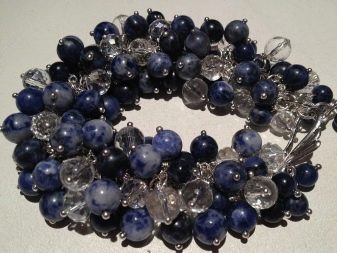
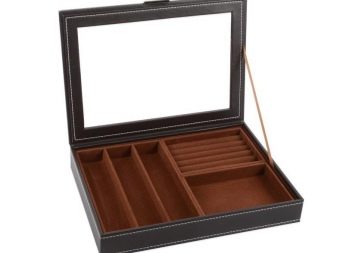
For details on the properties of sodalite, see below.








